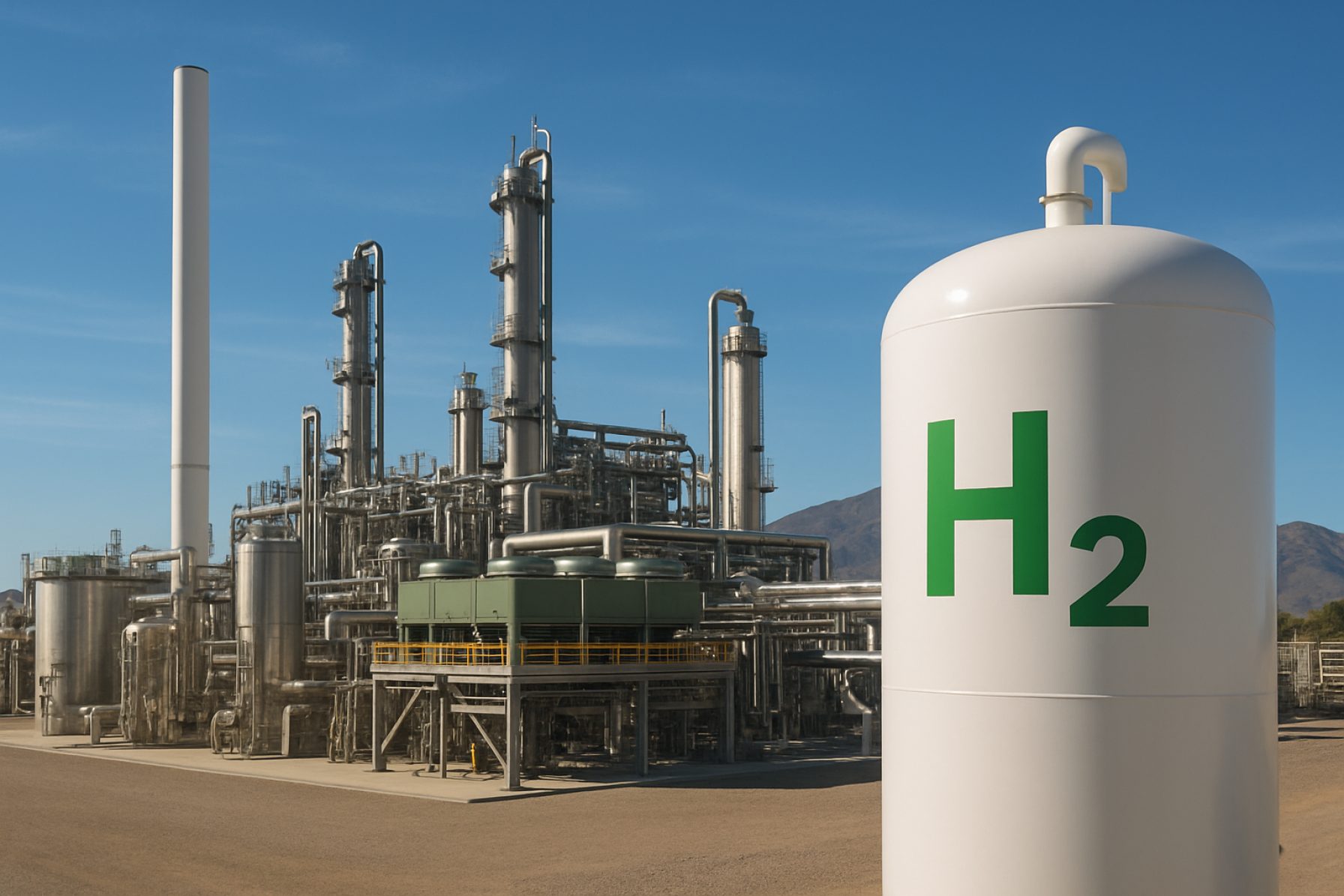How a Massive Hydrogen Mega-Plant Will Transform Lancaster and Supercharge America’s Clean Energy Future
A $1.85B project set to power California with green hydrogen, slash emissions, save water, and spark jobs—starting in Lancaster in 2025.
- $1.85 billion: Total investment in Element Resources’ Lancaster Clean Energy Center
- 22,000 tons: Renewable hydrogen to be produced yearly
- 200,000 tons: CO2 emissions avoided annually
- Mid-2025: Construction start; full operations by 2027
Lancaster, California is stepping onto the world stage—and it’s sporting a green hydrogen crown. Element Resources, a heavyweight in renewable energy development, is launching North America’s largest green hydrogen production facility in this desert city, backed by an eye-popping $1.85 billion investment. The Lancaster Clean Energy Center promises to revolutionize not only local energy grids but also the future of industrial and transportation decarbonization across the country.
Picture this: 2,100 acres of sun-drenched Antelope Valley land, lined with shimmering solar panels and powerful industrial batteries. This high-tech landscape will soon drive a next-generation electrolyzer plant capable of pumping out 22,000 tons of renewable hydrogen—a clean energy source that’s set to replace diesel in trucks, buses, and heavy industries.
Q&A: Why Is Lancaster’s Green Hydrogen Plant So Groundbreaking?
What sets this facility apart? Unlike traditional hydrogen, which relies on fossil fuels, this plant uses only solar-powered electrolysis—splitting water into hydrogen and oxygen with zero emissions. All energy on-site is generated and stored locally, allowing the plant to operate entirely off the grid. That means true energy resilience during California’s infamous wildfires, power outages, and heatwaves.
How much water will the plant consume? Incredibly, the hydrogen facility will need just 15–20% of the water that local farms once used. With groundwater at a premium and droughts rising, this shift could redefine how California balances food, water, and energy in a warming climate.
Will residents see job opportunities? Absolutely. Hundreds of construction jobs and long-term operational roles will open up, drawing on local talent and boosting Lancaster’s economy. The project spotlights what’s possible when climate tech, community focus, and bold investment collide.
How Will Green Hydrogen Make a National Impact?
The Lancaster site isn’t just a local marvel—it’s a national template. By combining solar arrays, long-duration batteries, and large-scale electrolyzers, Element Resources is crafting a clean energy ecosystem that aligns with visionary policies like the Inflation Reduction Act. As the U.S. hunts for scalable ways to decarbonize goods movement, port logistics, and heavy manufacturing, projects like this will set the pace.
Most of the plant’s hydrogen will be consumed by regional trucking, mass transit, and key industries at first. But its scalable design means Lancaster could soon fuel zero-emissions growth far beyond California. The impact: cleaner air, measurable carbon savings, and a healthier environment for communities long plagued by ozone pollution.
How Does the Tech Work?
- Solar PV arrays harvest plenty of sunshine and turn it into clean electricity.
- Industrial-scale batteries keep the plant running day and night, with no interruptions.
- Electrolyzers use renewable energy to split water and make pure hydrogen—no fossil fuels required.
- On-site liquid hydrogen storage ensures steady supply for instant delivery to customers.
This combination offers a real-world glimpse into the future, proving that heavy-duty energy users can go green—reliably and at scale.
Lancaster has long embraced renewable innovation, making headlines as a “solar city.” But this move from agriculture to futuristic fuels dramatically accelerates the region’s low-impact, low-water, and zero-emissions credentials. If other cities follow, the domino effect could transform how America powers its biggest polluters.
What’s Next for Lancaster and the Clean Hydrogen Boom?
Pre-construction is already underway, with full build-out slated for 2025 and site operations by 2027. Element Resources’ project is just the first wave; falling costs for electrolyzers and favorable national policies mean more hydrogen hubs could soon dot the U.S. map.
Lancaster’s City Council is charging ahead with permits and strict environmental reviews, keeping residents’ priorities front and center. Transparent planning and stakeholder engagement remain top-of-mind as the region transforms from farm fields to clean tech front-runner.
Curious about the green hydrogen sector or clean tech opportunities? Dive deeper with these resources:
U.S. Department of Energy,
Hydrogen and Fuel Cell Technologies Office, and
Hydrogen Energy.
Check Your Readiness: How to Help Bring Clean Energy to Your Community
- Stay informed on local clean energy projects and attend city council meetings
- Advocate for resilient, low-impact tech—solar, battery, and hydrogen innovation
- Support training and workforce programs linked to green energy development
- Promote environmental justice and clear communication on zoning and land use changes
Want a cleaner, stronger California—and a greener America? Keep a close eye on Lancaster’s hydrogen breakthrough and help spark momentum for clean tech where you live.










